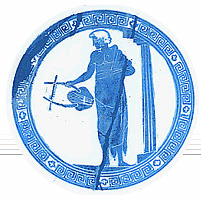Practice Test No. 1, Music
Appreciation, Ferrara
Answers
THE ELEMENTS AND STRUCTURES OF MUSIC
Instruments:
Match the following words with the correct equivalents:
a.Woodwind
1. oboe
b
Brass
2. violin
c.Strings
3. trombone
d.Percussion
4. harpsichord
e.Keyboard
5. clarinet
a-b.Plucked Strings
6. saxophone
7. flute
8. lute
9. bassoon
10. french horn
11. viola
12. trumpet
13. guitar
14. cello
15. piano
Elements:
Fill in the correct answer to the following questions or statements.
16. The movement of music through time and the
aspect of time in music is called___________
17.
A regular
recurring time unit that represents the pulsation of the music is
called____________.
18.
In triple
meter, the strongest pulse occurs on____________
19.
The shifting
of the accent to a weak beat or an offbeat is called_______________.
20.
A complete
musical idea or section within a larger melodic line is called____________.
21.
The first
note of a scale is what?_______________.
22.
What term
describes a combination of tones that sound at rest, resolved and in agreement?
_________________
23.
A
combination of tones that sound tense, unstable and in need of resolution is called_________________.
24.
The aspect
of music that reveals the relationship of the musical lines and how the blend to
create the musical fabric is called______________.
25.
The rate of
speed at which a piece of music is played is its_____________.
26.
In what
language are tempo markings generally given? ______________.
27.
Accelerando
is a term indicating that the speed of the music is________________.
28.
The degree
of loudness or softness at which music is played is called______________.
29.
The term
timbre refers to?_____________.
30.
Which of the
following markings is the softest?
·
a.
pianissimo,
·
b. piano,
·
c. mezzo
piano,
·
d. mezzo
forte
31.
The standard
ranges of the human voice from top to bottom are____________.
32.
Woodwind
instruments are so called because? ____________
33.
The highness
or lowness of a sound is determined by:
34.
Which of the
following is true?:
·
a. all tunes are melodies
·
c. all melodies are tunes
·
b. all motives are tunes
·
d. all phrases are themes
35.
A melodic
pattern of pitches repeated at a different pitch level is called a________
36.
Another word
for polyphony is______________
37.
Individual
movements of music are often referred to by their________________
38.
The two
modes or scales that have survived through out the ages and are used for
composing most music from 1600-1900 are__________________.
-
A meter with some aspects of duple in the foreground and at the same time a
triple in the back ground would be an example of_________________
- The mechanical device that measures the number of beats
per minute is known as a __________________
- An accent is________________
- A gradual slowing in a musical passage is known as
_____________
- One single melody played or sung without accompaniment is said to be in what
texture?__________________
- A melody with other supporting sounds markedly
subsidiary is in what texture? __________________
- In imitative counterpoint the voices do what?
46.
The form
that is diagramed ABA, and contains a departure and then a return of the first
section is called____________________.
47.
The form
that is diagramed ABACADA, and contains a periodic return of a central theme is
called_______________.
True or False Questions
- Tempo refers to the speed of a piece of music.
- Harmony is the successive sound of individual pitches.
- Consonant harmonies are more stable than dissonant
harmonies.
Match the following words with the correct equivalents
a.
largo
51. very loud
b.
adagio
52. allegro
d.
piano
53. loud
e.
fast
54. slow
a-b.
moderately slow, (at a walking pace)
55. soft
b-c.
pp
56. medium loud
c-d.
mf
57 very soft
d-e.
very fast
58. presto
a-e.
f
59. andante
a-c
fortissimo (ff)
60. very slow



